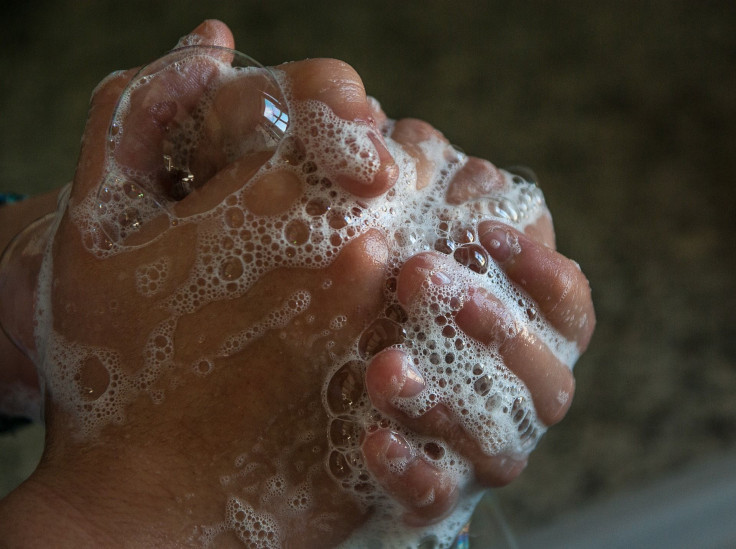Why You Don't Need Hot Water And Antibacterial Soap To Wash Your Hands

Thanks to a new study from Rutgers University, you can save your skin from scalding hot water the next time you wash your hands. Researchers found that warm and cool water remove the same amount of harmful bacteria.
Read: Why Antibiotic-Resistant Bacteria Is More Common And Difficult To Treat Than Previously Thought
The study was small, enlisting only 21 participants, who agreed to have copious amounts of (harmless) bacteria put on their hands many times over the span of six months. Then, they washed using 60-degree, 79-degree or 100-degree water and 0.5 ml, 1 ml or 2 ml of soap. In this case, more does not equal better as there were no significant differences between the amount of soap used when it came to cleanliness.
They also found that using antibacterial soap, containing one percent of the disinfectant chloroxylenol, wasn't any more effective in removing E. coli than regular soap. Last year, the Food and Drug Administration issued a report that antibacterial soaps weren't actually better and could cause health problems. The FDA ordered that companies stop marketing products containing triclosan, but no decision was made on soaps with chloroxylenol.
"People need to feel comfortable when they are washing their hands but as far as effectiveness, this study shows us that the temperature of the water used didn't matter," says study co-author Donald Schaffner, professor and food science researcher at the university, in a release on ScienceDaily.
The Centers for Disease Control recommends washing your hands using any water temperature for 20 seconds. If you don’t want to count, singing or humming the “Happy Birthday” song twice will get you in the ballpark. However, the new study found that even washing for 10 seconds significantly removed bacteria, though opting for the full 20 definitely doesn’t hurt.
Proper hand washing involves lathering and scrubbing the backs of your hands, between fingers and underneath the nails as the friction helps lift dirt, germs and grease. The CDC says that microbes are especially prevalent under the nails. It may seem like common knowledge, but when was the last time you vigorously washed every little crevice?
Researchers from Michigan State University found that only 5 percent of us are doing it the right way. Their findings are based on evaluating the way more than 3,700 people performed the task in public restrooms. Only 5 percent washed long enough to kill infection-causing germs, 33 percent didn’t use soap and 10 percent went without washing altogether. In fact, the average length of time for hand washing was only six seconds, falling short of the newest study’s advised 10 seconds.
Read: Are Women Cleaner Than Men? Scientists Look At Germs In Offices, Restrooms, And On Hands
Quick and easy, hand washing is one of the most effective ways to prevent you from getting sick. For times when soap and water aren’t readily available, using a hand sanitizer that contains 60 percent alcohol is a good substitute, but these products will not eliminate every type of germ. Sanitizer is also not effective for hands visibly caked with dirt or grease as well as those with chemicals from using things like pesticides.
See Also:
Essential Oils That Kill Bacteria: How To Use Lavender, Cinnamon, Tea Tree And More



























